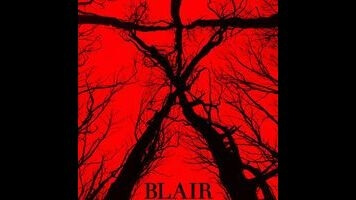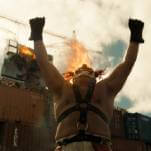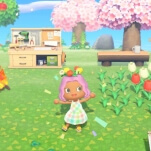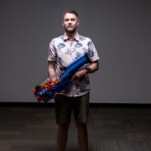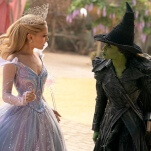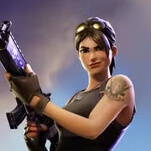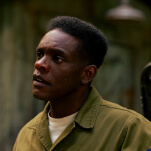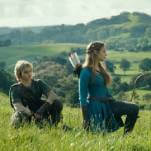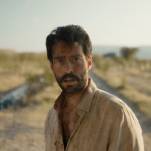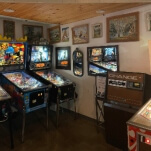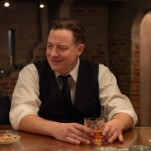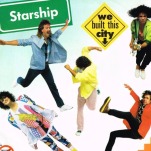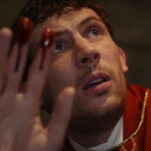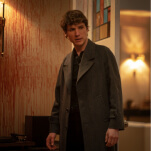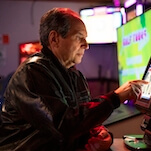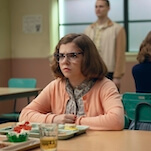More than any of the countless found-footage horror movies that have arrived in its wake, The Blair Witch Project makes you believe. Okay, so maybe not literally believe. By the time the film opened in theaters in the summer of 1999, several months after scaring the bejesus out of festival-goers at Sundance, the cat was basically out of the bag: Those were actors running around in the woods, not real people really dying in some snuff-film documentary for our multiplex amusement. But if there were those who fell for the ruse, and plenty of others who could suspend their disbelief enough to get spooked, it’s because The Blair Witch Project doesn’t look, sound, or operate like a normal movie. In its unscripted pandemonium, it genuinely seems like something recovered, not staged. And none of the mock-doc imitators it’s inspired have ever matched its home-movie-from-hell verisimilitude.
The new Blair Witch doesn’t even come close. Only the most gullible could ever confuse it for the genuine article, for any kind of recorded reality. Part of the problem is that the whole found-footage gimmick has lost its novelty and credibility over time: Audiences have seen too many of these cheapie mock docs to ever be fooled by one of them again. But even if one could forget 17 years of handheld paranormal activity, Blair Witch would still appear too obviously orchestrated to replicate the primal, vérité unease of its predecessor. This belated sequel, made in secret under the fake title The Woods, very much does look, sound, and operate like a normal movie—at least the kind that The Blair Witch Project helped spawn.
At least it’s not Book Of Shadows, the lousy and conventionally filmed follow-up that arrived a little over a year after the original opened to big box-office and maybe even bigger backlash. A corrective to that failed cash grab, Blair Witch restores the found-footage angle of the first movie, applying it to a very similar plot. This time around, it’s James (James Allen McCune) who’s organized an expedition to the Black Hills Forest of Maryland, where his sister—the character played by Heather Donahue in part one—disappeared back in 1999, alongside two other filmmakers. Accompanied by documentarian Lisa (Callie Hernandez), childhood best friend Peter (Brandon Scott), Peter’s girlfriend, Ashley (Corbin Reid), and two townies (Wes Robinson and Valorie Curry) who know the lay of the land, James returns to the site where his sister’s video footage was discovered. It isn’t long before the group starts encountering some familiar bad omens, like the stick figures dangling from trees around their campsite. Not long after that, people start disappearing.
Superficially, all of this recalls the blueprint of Project. But director Adam Wingard and screenwriter Simon Barrett, the budding genre pros who made You’re Next and The Guest, don’t trust the simplicity of their borrowed premise. Following the usual up-the-ante strategy of horror sequels, their film makes everything bigger: There are more characters/victims, more technology (including a phone-operated drone and head-piece cameras that offer some first-person angles), a little more gore, and a lot more noise. (The soundtrack is pure cacophony, at least once all hell has broken loose.) The results play less like a throwback to the subtle analog tactics of the original than a fun house designed around the Blair Witch brand. Little commitment is made to the illusion of veracity; whereas the original assembled a cast of unknowns, this one features working actors with numerous film and TV credits to their names.
Wingard and Barrett have previously established themselves as savvy remix artists, making distinctive entertainment out of the spare parts of older movies. But beyond toying with the element of time in an interesting way——let’s just say it passes differently in the Black Hills—Blair Witch doesn’t deviate productively. The original’s power came from a steady build in dread, as its characters slowly realized how fucked they were, and their panic and paranoia became our own. The movie tapped into universal fears, many straight out of childhood: of being watched, of getting lost, of the total darkness of nighttime. And it laid those anxieties on top of a human story of shattered relationships, three friends losing their wits as they lose their way. Blair Witch replaces all of that with a succession of (admittedly effective) jump scares. At least its gags are good, especially in the home stretch; the final passage has cruel fun with the blind corners of a dilapidated property.
Is the film scary? It administers its jolts with impeccable timing and may well satisfy those who felt swindled by the hype surrounding the much-more-suggestive original. (No one could accuse this elaborately choreographed fright machine of anticlimax, that’s for sure.) Maybe it’s unfair to hold a new Blair Witch to the standards of the old Blair Witch, an experiment very much of its early-web, pre-viral-video time. And yet like a lot of fan-servicing reboots, the film is so intent on reminding viewers of what it’s riffing on—of playing on their nostalgia for the property—that unflattering comparisons are inevitable. Blair Witch will make popcorn fly. But it won’t make anyone believe.
